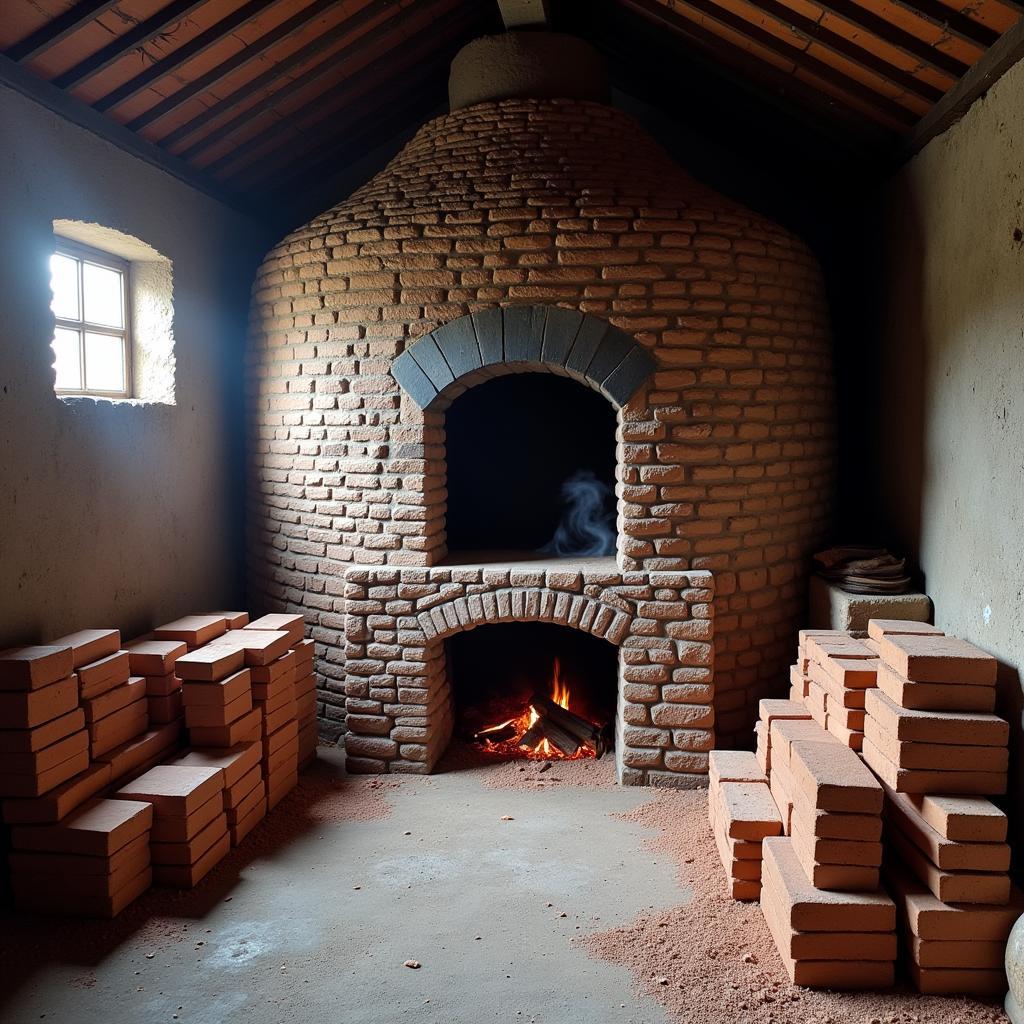The brick manufacturing process is a fascinating blend of ancient techniques and modern technology, resulting in one of the most fundamental building materials in the world. This article delves into the intricate steps involved in transforming clay into durable bricks, providing valuable insights for those interested in construction, engineering, or simply expanding their knowledge for the IELTS exam.
From Quarry to Kiln: The Journey of Clay
The journey begins with sourcing the primary ingredient: clay.  Clay extraction for brick production Clay is a natural material found in abundance across the globe, formed over millennia from weathered rock.
Clay extraction for brick production Clay is a natural material found in abundance across the globe, formed over millennia from weathered rock.
Once extracted from quarries, the clay undergoes a series of crucial preparation steps.
Preparing the Clay: A Foundation for Quality
- Cleaning: The raw clay often contains impurities like stones and organic matter. It is first passed through a series of screens and crushers to remove larger particles.
- Mixing: Different types of clay possess varying properties. Manufacturers carefully blend these varieties to achieve the desired plasticity, shrinkage rate, and final brick characteristics.
- Water Addition: Water plays a crucial role in achieving the right consistency for shaping. The amount added is meticulously controlled to ensure the clay mixture is neither too wet nor too dry.
Shaping the Bricks: Traditional and Modern Methods
The prepared clay mixture is now ready to be molded into the familiar rectangular shape of bricks. Two primary methods dominate the industry:
1. Extrusion Molding:
- The clay is forced through a rectangular die, similar to squeezing toothpaste out of a tube.
- This continuous ribbon of clay is then cut into individual bricks using wires.
- Extrusion is highly efficient and suitable for large-scale production.
2. Dry-Press Molding:
- Here, the clay mixture is compressed into individual molds under high pressure.
- This method produces denser bricks with sharper edges, often preferred for their aesthetic appeal.
Drying and Firing: Transforming Clay into Brick
 Traditional brick kiln
Traditional brick kiln
After shaping, the bricks embark on a heat treatment process that transforms them from soft clay to hardened building blocks.
1. Drying:
- This crucial step removes excess moisture from the bricks before they enter the kiln.
- Controlled drying is essential to prevent cracking and warping.
- Traditionally, bricks were air-dried, while modern factories utilize dedicated drying chambers.
2. Firing:
- The dried bricks are carefully stacked in kilns and subjected to intense heat, reaching temperatures between 900-1300 degrees Celsius.
- This firing process strengthens the clay through chemical reactions, resulting in hardened, durable bricks.
The Final Product: A Versatile Building Block
Once cooled, the bricks are ready for packaging and distribution. The brick manufacturing process yields a versatile product used in countless construction applications, from load-bearing walls to intricate facades.
Understanding the meticulous steps involved in creating this seemingly simple building material highlights the ingenuity of both traditional practices and modern advancements. The next time you see a brick building, take a moment to appreciate the fascinating journey of clay transformed by human ingenuity.





